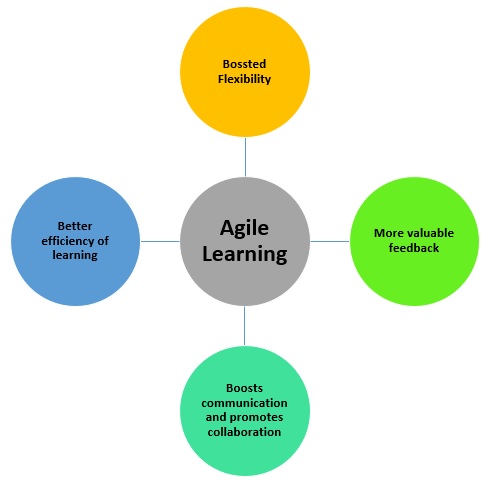
Certainly, the digital transformation is accelerating across industries. In order to overcome various deficiencies, organizations must discover ways to support their workforce gain new skills. Here comes the need for agile learning which is an approach and set of behaviors that empower people to learn, acclimatize, unlearn, and relearn to keep up with continuously changing conditions.
The basics of organizational agility start with a steady backbone upon which to build. Today’s global business leaders distinguish that agility needs to be built into your business objectives to keep your association flexible enough. This also helps to get prepared for whatever the future has in store. Likewise, the agronomy of learning agility among your staff is a grave aspect of future planning which may mean the variance between success and failure.
Understanding Learning Agility
In short, learning agility is a skill that combines 2 major elements:
Applying an agile learning practice into your learning and development approach can give your association a benefit over its participants through speed and flexibility.
Agile learning has numerous different applications, starting from project management to team association and so on. However, it’s most valuable throughout the growth phase of training projects where the necessity to adjust is frequently higher than in other types of projects.
Major Benefits Of Agile Learning
Well, the term agile comes from the software development industry. The chief benefits of this approach in learning and development are:

Tips For Creating An Agile Learning Workforce
If you want to create an agile learning culture in your organization, there are a few key steps to follow:
As a 21st-century leader, it’s necessary to confirm you’re associating with learning providers or academic establishments that have coursework planned to meet in-demand skills. This safeguards that employees have access to the most informed statistics that are highly relevant to their parts.
Also, try to give employees with tangible consequences. Motivate employees to take advantage of learning. Develop customized learning ways. Monitor, measure and optimize development.
Wrapping Up
You need to invest in your employees’ learning and development if you seriously want your organization to stay applicable and competitive enough. The online training program on managing learning transfer is something worth considering. When the time comes for your organization to make a variation, your staff’s skills to learn quickly and be agile can be features that accelerate your company’s growth.
If you have any queries regarding learning and development solutions programs, call our toll-free number: 1800-212-6400.
Written By : Sudeshna Guha Thakurta
Centre For Training & Professional Development (CTPD) - The Trading brand of TTA Training Private Limited, India is a ISO 9001:2015 Company




© 2021 - Centre For Training & Professional Development (CTPD). All Rights Reserved. Centre For Training & Professional Development (CTPD) trading brand of TTA Training Pvt. Ltd (India) - CIN U80902WB2016PTC215839, Asia Teachers Training Co., Ltd (Thailand) - Registration No. 0105558193360 & Asian College Of Teachers Ltd (UK) - Company Number 9939942 & Asian College Of Teachers LLC, (USA) - Federal Tax Identification Number 30-1261596
Designed by kreativewebtech